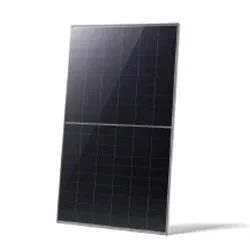solar panel options
Exploring Solar Panel Options A Guide to Choosing the Right Solar Technology
As the world shifts towards sustainable energy solutions, solar panels have become a popular choice for both homeowners and businesses looking to reduce their carbon footprint and energy costs. The market offers a diverse array of solar panel options, each with its unique characteristics, benefits, and drawbacks. This article aims to provide an overview of the various solar panel types, helping you make an informed decision about which option is best suited for your energy needs.
Types of Solar Panels
1. Monocrystalline Solar Panels Monocrystalline panels are known for their high efficiency and sleek appearance. Made from a single crystal structure, they typically offer efficiency rates of 15% to over 20%. Their remarkable efficiency makes them an excellent choice for homeowners with limited roof space. However, monocrystalline panels tend to come at a higher price point compared to other types, making them a significant investment upfront.
2. Polycrystalline Solar Panels Polycrystalline panels are composed of multiple crystal structures, which produces a distinctive blue hue. While they are generally less efficient than their monocrystalline counterparts, with efficiency rates ranging from 13% to 16%, they are often more affordable. Their lower manufacturing costs make them an attractive option for budget-conscious consumers. However, they may require more space to produce the same amount of energy as monocrystalline panels.
3. Thin-Film Solar Panels Thin-film solar panels are versatile and lightweight, making them suitable for various applications, including large installations and unique architectural designs. Although their efficiency typically ranges from 10% to 12%, they perform better in low-light conditions and high temperatures than crystalline panels. The lower efficiency means that larger installations may be needed to meet energy needs. Thin-film panels are usually less expensive but may have a shorter lifespan compared to other options.
4. Bifacial Solar Panels Bifacial solar panels are designed to capture sunlight from both sides, utilizing reflected light from the ground or other surfaces. This technology can improve energy production significantly, especially in environments with high albedo, such as snowy or sandy areas. While they are often more costly than traditional panels, their ability to generate more energy can justify the investment, particularly for large commercial installations.
Key Factors to Consider
solar panel options

When selecting solar panels, several factors need to be taken into account
- Efficiency Higher efficiency panels will produce more energy and may require less space. Determine how much energy you need and how much roof space is available to assess the efficiency required. - Cost While upfront costs are important, consider the long-term savings on energy bills. Sometimes, spending more on a higher-efficiency panel can lead to greater savings over time.
- Durability and Warranty Look for panels that offer a lengthy warranty (typically 25 years) and are known for their durability. This is crucial for ensuring the panels withstand environmental factors, as well as for securing your investment.
- Aesthetics Solar panels come in various designs and colors. If the aesthetics of your home are a concern, consider solar panels that blend with your roof or have a more attractive appearance.
- Installation and Maintenance Choose a reputable installer who can efficiently place the panels. While solar panels typically require minimal maintenance, it’s essential to ensure that they are installed correctly to maximize performance.
Conclusion
Investing in solar panels is a significant step toward harnessing renewable energy, but it’s crucial to select the right type for your needs. By understanding the different solar panel options available, you can make an informed decision that aligns with your budget, energy requirements, and aesthetic preferences. Whether you choose high-efficiency monocrystalline panels, cost-effective polycrystalline options, or innovative thin-film technology, embracing solar energy can lead to long-term savings and a positive environmental impact. As solar technology continues to evolve, the potential for clean energy solutions remains promising, paving the way for a sustainable future.
-
Unlocking Energy Freedom with the Off Grid Solar InverterNewsJun.06,2025
-
Unlock More Solar Power with a High-Efficiency Bifacial Solar PanelNewsJun.06,2025
-
Power Your Future with High-Efficiency Monocrystalline Solar PanelsNewsJun.06,2025
-
Next-Gen Solar Power Starts with Micro Solar InvertersNewsJun.06,2025
-
Harnessing Peak Efficiency with the On Grid Solar InverterNewsJun.06,2025
-
Discover Unmatched Efficiency with the Latest String Solar InverterNewsJun.06,2025







